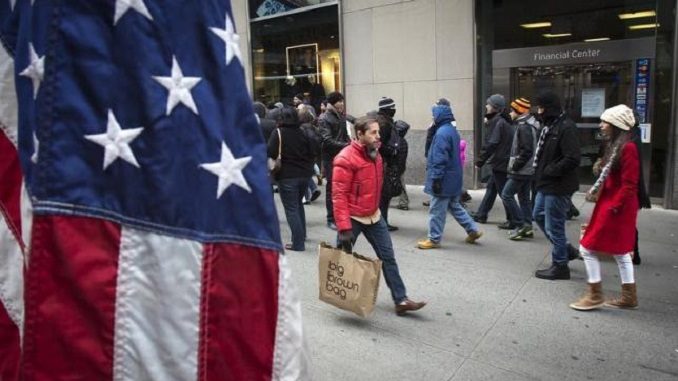
U.S. retail sales increased by the most in 1-1/2 years in March as households boosted purchases of motor vehicles and a range of other goods, the latest indication that economic growth picked up in the first quarter after a false start, Reuters informed.
The economy’s enduring strength was reinforced by other data on Thursday showing the number of Americans filing applications for unemployment benefits dropped to the lowest in nearly 50 years last week. Fears of an abrupt slowdown in growth escalated at the turn of the year after a batch of weak economic reports.
They were also exacerbated by a brief inversion of the U.S. Treasury yield curve in late March. But those concerns have dissipated in recent weeks amid fairly upbeat data on trade, inventories and construction spending that have suggested growth last quarter could be better than the moderate pace logged in the final three months of 2018.
A report from the Federal Reserve on Wednesday described economic activity as expanding at a “slight-to-moderate” pace in March and early April. The Fed’s “Beige Book” report of anecdotal information on business activity collected from contacts nationwide showed a “few” of the U.S. central bank’s districts reported “some strengthening.”
“The rebound in retail sales underscores that the domestic outlook remains favorable and well-supported by the labor market, and it dispels the misguided concerns that the U.S. economy is slipping into recession,” said Kathy Bostjancic, head of U.S. macro investor services at Oxford Economics in New York.
The Commerce Department said retail sales surged 1.6 percent in March, the biggest increase since September 2017, after dropping 0.2 percent in February. Economists polled by Reuters had forecast retail sales accelerating 0.9 percent last month.
With March’s rebound, retail sales have now erased the plunge in December that put consumer spending and the overall economy on a sharply lower growth trajectory. Retail sales last month were probably lifted by tax refunds, even though they have been smaller than in previous years, following the revamping of the U.S. tax code in January 2018.
Excluding automobiles, gasoline, building materials and food services, retail sales rebounded 1.0 percent in March after declining 0.3 percent in February. These so-called core retail sales correspond most closely with the consumer spending component of gross domestic product, Reuters added.
Consumer spending accounts for more than two-thirds of economic activity and is being buoyed by a tightening labor market that is driving up wage growth.




Be the first to comment